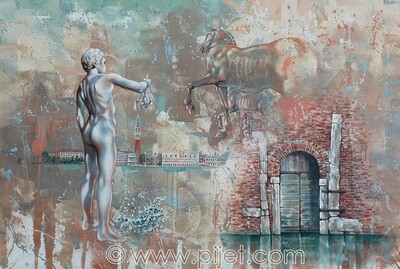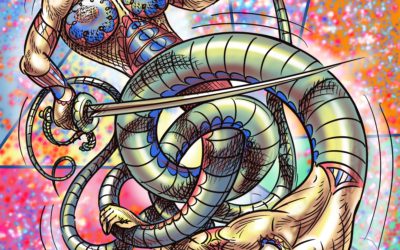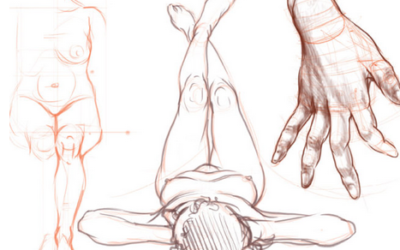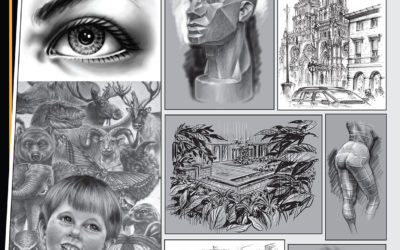The Venetian Scuole: Aspects of 15th and 16th century Art.
Italian Renaissance emerged on the basics of the classical values of the antiquity. Intellectual resurrection of humanity in the enthusiasm of new discoveries; philosophic, literary, artistic, etc., also brought regeneration of spirituality.
Venice, in the context of its specific geographical conditions, became in many ways unique in construction of its power. Among many characteristics of Venetian culture, the most interesting is the way Venetians built their social structures based beside the initial government, on the Scuole Grande, Scuole Piccole, and Guilds. Each of them had specific role to play in the greatness of Venetian Republic.
The Venetian Art of 15th and 16th centuries is closely related to the socio-cultural activities of Venetian Scuole. Basically devotional in their nature confraternities in the service of common interest of Venetian society, the Scuole were particularly efficient in their charitable activities. Venice was a city of splendor and charity, considered by many as a pearl of Adriatic Sea, where the art of living achieved the highest standards of socio-political formation of collective existence.
The Scuole originated in the early 13th century from the Flagellant movement transferred into first devotional confraternities,[1] which became later Scuole. The Venetian Government had favorable approach to those confraternities mostly because the Scuole were able to fulfill the essential devotional and existential needs of Venetian population, and by doing so they secured the integrity of the Republic.
The particularity of Venice, city constructed on the sea,[2] naturally protected from hostile appetites of the neighboring settlements by surrounded waters of the Lagoon, created suitable ground for economic development and spiritual needs of Venetian population. Furthermore, the devastating effects of Black Death,[3] constant wars, and political instability on the European continent, created suitable ground for the cult of Saints, as official protectors against any unfortunate events. Venice, in regard to her geographic situation, was especially keen to obtain the Saints favors. In the context of those factors, the art of devotional painting had a peculiar role to play, as a constant reminder to the population about the importance of prayers, and humble, honest life, as a condition in achieving salvation, and enter to the Paradise after the earthy existence.
The importance of the Scuole activities in shaping the character of Venetian society in 15th, and 16th centuries, could be scrutinize by comparison of two works of the great, and significant artists of The Most Serene Republic of Venice[4] Giovanni Bellini, and Jacoppo Robusti, called Tintoretto. In both cases, the Scuole commissioned the artwork.
The Giovanni Bellini’s San Giobbe altarpiece, executed sometimes in 1480-85, was dedicated to Saint Job, the Plague Protector.[5] The Franciscans based Scuola Piccola Di San Giobbe commissioned the painting for the altar of new built church of Saint Job. It is in many ways precursory artwork in Bellini’s artistic career as a devotional painter. There is a lack of information concerning the details of the commission. However, there are some suppositions that rich Venetian families, whose identity is unknown, commissioned the altarpiece. In San Giobbe, Bellini elaborated to the perfection his earlier invention of altarpiece influenced by architectural elements of Florentine tabernacle, done probably in purpose to relate the image to the symbolic of Eucharistic allusion to the Host Tabernacles. Moreover, it was probably Bellini’s first altarpiece executed in a new oil technique.[6] The painting was moved from the high altar to the nave altar, in consequence it was cut significantly from the top and base, so it would fit into the new space. At the present the artwork is on the permanent display at the Gallerie Dell’Accademia, in Venice.
The second work is the Tintoretto’s painting of Moses striking the rock, painted almost 100 years later than the Bellini’s altarpiece. The artwork is a part of 21 paintings from the ceiling decoration at the Sala Superiore of the Scuola Grande Di San Rocco, which was established in 1478, as a result of growing importance of the cult of Saint Roch,[7] the Plague protector. This Scuola was different from the others. Usually, the Scuole constructed their meetinghouses as the architectural addition to the existing churches. In the case of the Scuola Grande Di San Rocco, they built the church of Saint Roch between 1489-1508, as an addition to their meeting building of the Scuola.
The Scula Grande Di San Rocco was the richest and the most performing of the Scuole Grandi. To finance the construction of the church of San Rocco, and the building of the Scuola, as well as charitable and cultural[8] activities, they constructed the apartments for rent. They were also selling printed images of San Rocco to the public for private veneration. The splendor of constructed Scuola and the church, apart of existing opponents and critics, were considered essential to the adequate expression of religious devotion, as well as charity, and taking care of the less fortunate.
Tintoretto was commissioned to decorate the Scuola by his way of imposing his artwork[9] to the Comity and overtaking the advantage from the other artistes invited by the Scuola to present their submissions for the ceiling painting of Saint Roch in the Sala Dell’Albergo. Apart of the way how he obtain the commission to execute the decorative work of the entire Scuola, he marked the Scuola by the quality of his labor, which was recognized and appreciated by the majority of brothers of the confraternity. The image of Moses striking the rock plays significant part in Tintoretto’s huge project. The painting, as well as the Scuola is still at the same place, and the Scuola Grande Di San Rocco is still performing its activities.
Analyzing paintings, Bellini’s San Giobbe altarpiece, and Tintoretto’s Moses striking the rock, it becomes evident to us, how different those works are in relation to the Scuole, which commissioned them. We can observe the progress of Venetian Renaissance maid within 100 years in compositional approach, in depicting religious themes. It is evident that those two artworks were done for two different Scuole. Bellini’s painting in the style of Sacra Conversatione, reflects clearly the devotional character of the Scuola Piccola of San Giobbe, by the composition and by grouping the Saints represented on it. Tintoretto’s Moses striking the rock, painted with typical to his splendid, dramatic, and energetic strokes of his brush, describes perfectly The Scuola Grande Di San Rocco active, and energetic performances on many levels of their devotional exercises. One and the other are related to the Plague Saints. Bellini’s painting refers directly to the Plague Saints, and Tintoretto’s is a part of Biblical essay to the glory of San Rocco, also Plague Saint. The Bellini’s altarpiece was commissioned as a result of the second visit of Bubonic Plague in Venice, in 1478. Tintoretto’s painting of Moses was executed after the third passage of Black Death in 1576. They are connected by being a part of the series of paintings produced in order to glorify the miraculous abilities of Plague Saints.
Bellini’s calm and static composition, depicting Saint Mary with child Jesus in the company of Saint Francois, Saint John the Baptist, Saint Job, Saint Dominique, Saint Sebastian, and Saint Louis de Toulouse, is referring to the principal activities of the Scuola Piccola Di San Giobbe such as taking care of physical and spiritual needs of those who suffer from various diseases, included Plague as well. The Scuola was offering a comfort to those exposed to a similar misery as their patron, San Giobbe.
In Tintoretto’s blasting with action composition, the dominating figure is God, which symbolizes the enormous donations the Scuola was always receiving from privet donors. God is in position of transferring the power to the Moses, who symbolizes the Scuole. Moses in consequence is able to supply the water, the symbol of goods, to his suffering from thirst nation. The painting symbolizes the Scuola Grande Di San Rocco activities of taking care of the unfortunate once with the help of God. The spurting water symbolizes life. It is coming out from the rock; divided in three streams spurting out in different directions, referring to the Saint Trinity.[10] It is as well a reference to the various Scuola activities, such as free housing, dowries, gifts, distribution of clothing, money, and meals to the poor, practicing religion, and taking care of burials.
Moreover, on the rock, from which the water is coming is growing the fig tree, the symbol of life, abundance, fertility, religious knowledge, heaven, and salvation. Each of those meanings refers directly to the Scuola performance.
In Bellini’s San Giobbe painting, each Saint is depicted in the deep devotional concentration. They are in their own thoughts. Their bodies are in perfect physical condition in order to encourage the sick trough the spiritual approach to fight their sicknesses with prayers, and confidence in the Gods power, as the only way to the total recovery of their health. By focusing mainly on the symbolism related to the Scuola actions, the presence of Saint Francois with his open wounds,[11] symbolizes the crucifixion of Jesus Christ, inviting the worshiper to the prayers, and spiritual enlightenment. The prayers and devotional designation would help to fight diseases, and the miseries of life. Saint Mary with the child Jesus on her knees is seating on the throne, which refers to the King’s Salomon wisdom, knowledge, and intelligence. Jesus Christ presence and his gesture towards San Giobbe praying hands position, refers to the importance of exercising the mass services, as a part of the process of comforting the worshipers’ spirits. The throne symbolizes also the church, as a place of direct contact with the Saints, providing the suitable place for devotional purposes. Mary’s presence in the company of Saints, suggests her protective power over Scuola activities, and Venice[12] as well. On the painting each of the Saints present miraculous recovery from their wounds[13] and diseases. The depiction of their bodies in perfect shape, visualizes the miraculous possibilities of the prayers to the worshiper, and the Scuola role in supplying the comfort, and hope for those in need.
The two main Plague Saints, San Giobbe, and Saint Sebastian, are facing each other, as a reference to the united representation of Old and New Testaments, in struggles of giving hope to those exposed to the test of their faith by God. The background behind, with the elaborated marble and mosaic, refers to the Ducal Basilica of Saint Marc. The church of Saint Job was also on patronage of Doge Cristoforo Moro. It indicates the importance of the Scuola devotional activities in the eyes of the Venetian Government. The Baldacchino over the Saints heads refers to the protective character of the Scuola, to those who suffer.
In Tintoretto’s painting, the protective aspect of the Scuola is represented by the dog in alert position, attentively watching the distribution of water among those in demand. The figure of woman with the child, in front, indicates the particular attention of the Scuola to the protection of families. The head of the calf refers to Saint Luke, the most substantial writer of the New Testament. Furthermore, he was a patron of the painters,[14] known as a painter of words. Tintoretto associated his qualities with the Scuola Grande Di San Rocco, as a symbol of the quality offered services to the Venetian community.
The presence of the calf, symbolizes also the generosity, and protective force of the Scuola. By placing the battle scene behind Moses, Tintoretto, refers to the protective nature of the Scuola against devastating forces of wars, diseases, and poverty.
Other similar Bellini’s works, the altarpiece of San Zaccaria, commissioned in the memory of Pietro Cappello for the church of San Zaccaria, has similar compositional approach, with inventive architectural arrangement of open spaces on the sides. In comparison to the San Giobbe, this time the Saints are in more natural environment, without loosing the atmosphere of spirituality and devotion in it. Bellini’s artwork proves his extraordinary flexibility of adjustment to the new artistic tendencies. Referring to Tintoretto’s other paintings for the Scuola Grande Di San Rocco, each of them refers to the specific activities of the Scuola, as for example; Gathering of Manna, or Ezekiel multiplying the loaves.
In conclusion, the Bellini’s San Giobbe, and Tintoretto’s Moses striking the rock, separated almost 100 years by their execution dates, relate closely to each other, because both reflect the image of Venetian society of those specific times, as well as the particularities and characteristics of the Scuole which commissioned them.
Bellini’s and Tintoretto’s artworks, prove the importance of the Scuole activities in shaping of the Venetian culture.
The artists of Venetian Renaissance marked the Western Art in their own unique style of the architecture and timeless art pieces, to be admired by the generations to come.
[1] 1110 – The establishment of the first confraternity in honor of Saint Stephen’s relics at the Benedictine church of San Giorgio Maggiore in Venice.
1260 – The establishment of the first Scuola Di Santa Maria della Carita in Venice.
[3] The Bubonic Plague was penetrating Europe few times, passing through Venice in 1348 – 1351, and kept coming back in 14th, 15th, and 17th century. In 1630-31, Venice lost 46.000 people out of 140.000. Marco Polo voyages brought infected rats to Europe from China. Middle age Central Asia was a principal source of the contamination.
[6] According to existing information, Antonello Da Messina introduced the oil technique in Venice in 1475-76.
[9] Tintoretto brought to the Comity ready painting of Saint Roch received into Heaven, and offered it as a gift to the confraternity. By doing so, he imposed his candidature for the execution of other paintings as well, by lowering the price for three paintings to 100 ducats, when in that time the average price for one painting of such quality was 100 ducats.
[12] Saint Mary was considered as protector of Venice in relation to the official establishment of the city on the 25th March 421. 25th March is also the Annunciation date.









